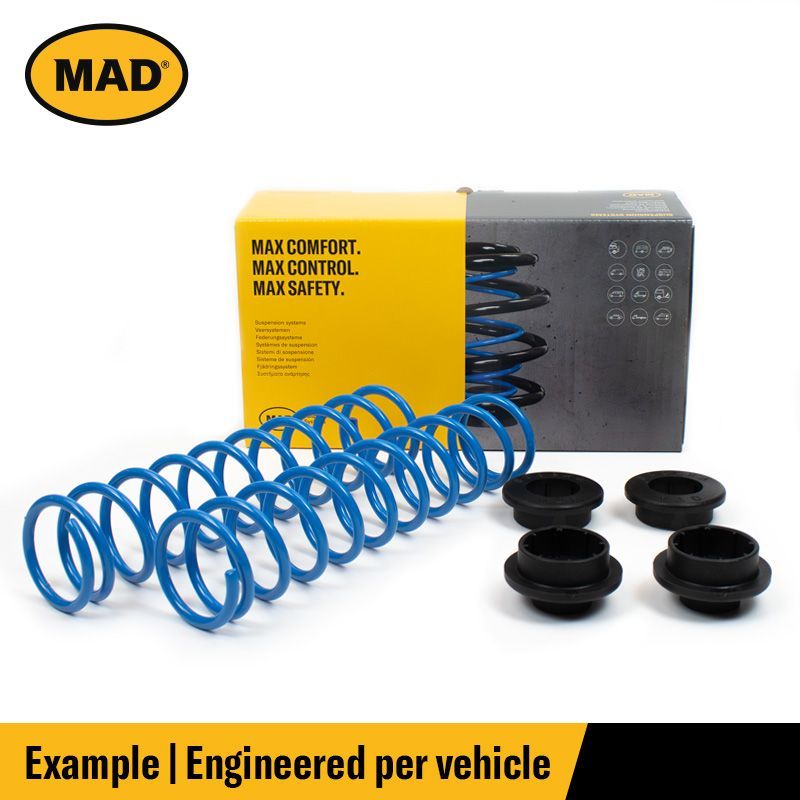Make — Model
Helper Springs — Ride taller, drive safer.
MAD helper springs keep your vehicle level and controlled with passengers, luggage, or hitch loads — comfort stays close to stock when unladen.
 TÜV approved
Bolt-on install
No maintenance
TÜV approved
Bolt-on install
No maintenance
* US mainland all-in pricing: tax, import fees & shipping included. Installation cost: ask your local shop. TÜV approval unless noted.

How it works
Auxiliary coils add support when you load the car; stance and stability improve without air lines or compressors.
- Coils tuned to support OE springs
- Support ramps with payload
- Simple bolt-on hardware
What you’ll feel
- Reduced sag with luggage
- More stability in turns & crosswinds
- Comfort close to stock when empty
Why MAD vs. air
- Predictable spring rate, no leaks
- TÜV part approval & fitting manual
- Low upkeep — no compressors/lines
Available kits
* US mainland all-in pricing: tax, import fees & shipping included. Installation cost: ask your local shop. TÜV approval unless noted.
Fitment
Install overview
- Coil springs: ≈ 60–90 min · Strut work; spring compressors required; alignment recommended afterwards.
- Upgrades improve support & stability but do not change GVWR or tow ratings.


